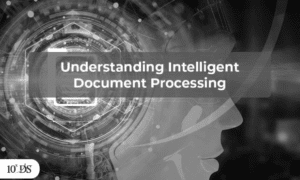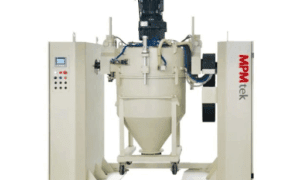In today’s business environment, documents—from invoices and receipts to contracts and emails—are filled with crucial data. Traditionally, extracting and processing this information has relied heavily on manual effort. Intelligent Document Processing (IDP) offers a smarter solution by harnessing advanced technologies to automate these tasks. Many business leaders ask, What is intelligent document processing? Simply put, IDP is software that automatically captures data from documents, interprets the content, and integrates it into your workflows. It combines techniques such as Optical Character Recognition (OCR) and artificial intelligence (AI) to analyse, classify, and extract data from a wide variety of documents. Unlike basic OCR, which merely scans text, IDP actually understands its context, allowing it to identify and verify information such as invoice numbers or due dates.
By automating repetitive data tasks, IDP frees up your team’s time, cuts down on errors, and makes information available more quickly. Below we explore how IDP works in practice, breaking down its key steps and showing how each contributes to a faster, more reliable document processing workflow.
Step 1: Document Ingestion and OCR
The first stage of intelligent document processing is document ingestion, which involves collecting documents—either digital or paper-based—so they can be converted into a format the software can interpret. When working with paper documents, OCR technology scans each page, turning characters on the page into machine-readable text. Modern IDP solutions typically enhance this process by optimising document images (removing noise, correcting skew) to maximise OCR accuracy.
Once the system has a digital representation of each document, it can begin to analyse and interpret the text. For instance, if your accounts department receives dozens of physical invoices, an IDP platform can quickly scan each invoice, extracting its text and storing it digitally. This eliminates the need for manual retyping, reducing errors and dramatically speeding up the initial capture of information.
Step 2: Document Classification
After ingestion, the next step is document classification—determining which category each document belongs to. IDP systems use a mix of artificial intelligence and machine learning (ML) models to analyse a document’s content and layout, allowing the system to work out whether it’s an invoice, contract, purchase order, receipt, or another type of document.
Classification is essential for routing documents to the right workflows and applying the correct extraction rules in subsequent stages. For example, an invoice usually contains fields such as supplier details, invoice number, and payment terms. A shipping note, however, might include delivery addresses and tracking codes. By accurately classifying documents up front, IDP ensures that the correct data can be extracted, verified, and passed along to the right systems further down the line.
Step 3: Data Extraction with AI
Once the document type is established, the IDP platform proceeds to data extraction. This stage involves identifying and capturing the specific information you need—such as invoice totals, dates, product line items, or customer names. The system uses advanced techniques like NLP (Natural Language Processing), machine learning models, and even computer vision to interpret content in context. It can spot references to a date, determine that a block of text refers to billing details, or extract a table of itemised charges.
As a result, IDP can handle both structured and unstructured documents, often relying on advanced unstructured data extraction techniques to interpret and process information accurately. For straightforward forms, it might use preconfigured rules (for instance, “Take the numbers following ‘Total Amount’”). For more complex or varied layouts, ML models and NLP help the system understand the wording and layout, enabling it to find the correct fields no matter where they appear. By automating data extraction, businesses can avoid manual typing and significantly cut down on processing time.
Step 4: Data Validation and Verification
Capturing data has little benefit unless it is accurate. During data validation, the IDP platform checks extracted information against business rules to identify possible errors or inconsistencies. Simple checks might verify whether a date follows a recognised format. More advanced validation can compare the extracted data with existing records—for instance, checking that an invoice number matches a known purchase order in your ERP system.
If the platform detects irregularities or lacks confidence in a particular field, it can flag the document for review. A human-in-the-loop approach allows employees to correct errors and confirm uncertain values. Over time, these corrections improve the platform’s machine learning model, refining its accuracy. This step offers confidence that the data entering your business systems is reliable, cutting down on the need for rework or dispute resolution later on.
Step 5: Workflow Integration and Automation
After successful validation, the extracted data is integrated into your organisation’s wider workflows. IDP platforms typically offer connectivity through application programming interfaces (APIs) or can link with Robotic Process Automation (RPA) solutions. This means the processed data is automatically sent into relevant systems—finance software, customer relationship management tools, contract management platforms, or other applications that depend on timely, accurate data.
For example, once your IDP platform has extracted fields from an invoice, it can push those fields straight into your accounts payable system, triggering payment approval if everything matches up. In a sales environment, the system might push extracted order details into your order management software for immediate fulfilment. Because all these tasks happen without manual intervention, organisations save considerable time, reduce potential errors, and maintain more consistent records across multiple systems.
Step 6: Continuous Learning and Improvement
One of the key advantages of intelligent document processing is its capacity for continuous learning. By incorporating machine learning, IDP systems get more accurate over time as they process additional documents and learn from each human-verified correction. If an organisation begins receiving a new style of invoice or purchase order, the system may initially make a few mistakes. Each correction, however, becomes part of the training data, improving future performance.
This adaptive capability reduces the need for manual reconfiguration whenever document layouts change or new document types appear. It also increases the return on investment, as the system becomes steadily more efficient without requiring extensive customisation.
Why IDP Matters for Business
The benefits of intelligent document processing extend far beyond simple convenience. By automating repetitive document tasks, IDP helps companies achieve:
- Greater Efficiency: IDP can handle volumes of paperwork that would otherwise tie up employees for hours or days. This faster turnaround frees teams to focus on higher-value activities.
- Lower Operational Costs: Reducing manual data entry decreases the chance of costly errors and lowers the time employees spend on non-strategic tasks.
- Better Data Accuracy: Inconsistent or erroneous data often leads to misunderstandings, compliance issues, or operational problems. Automating extraction and validation ensures fewer mistakes.
- Scalability: As your organisation grows or experiences seasonal peaks, IDP can scale to process higher document volumes without sacrificing speed or accuracy.
- Improved Visibility: Once data is captured and validated, it can be analysed for insights. For example, a finance team might use IDP data to monitor supplier payment trends or track contract obligations.
Getting Started with IDP
Choosing the right IDP solution involves evaluating factors such as ease of integration, customisation options, and the vendor’s track record. Some solutions specialise in specific industries or document types, while others are more general-purpose. Effective deployment often starts with a pilot project focusing on a high-impact area—for example, automating invoice processing in the finance department. By demonstrating quick wins, you can build internal support and expand IDP across other departments and workflows.
If you’re looking for a flexible, powerful platform that covers the full scope of intelligent document processing, businesses such as Netfira offer comprehensive tools designed for modern workflows. The ultimate goal is to create seamless, end-to-end processes where the right data flows to the right place without manual intervention. When coupled with well-planned change management, IDP can become a major driver of digital transformation, enabling a more agile and competitive organisation.

































